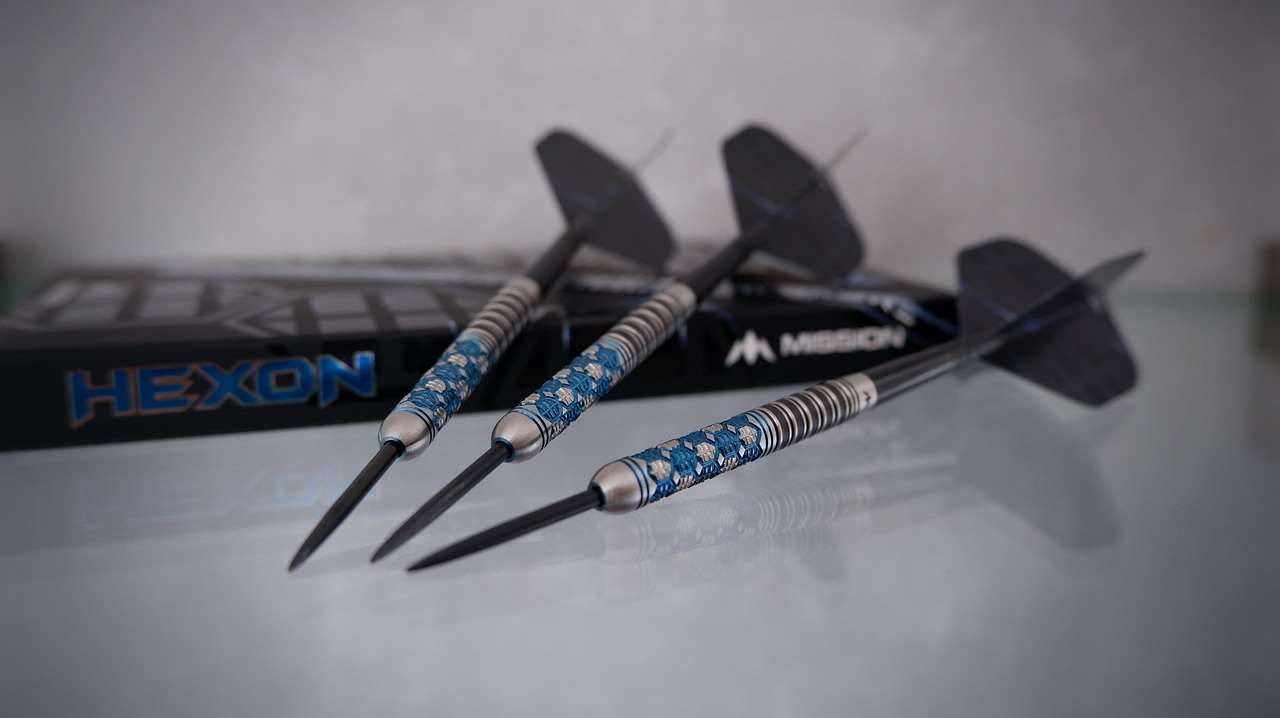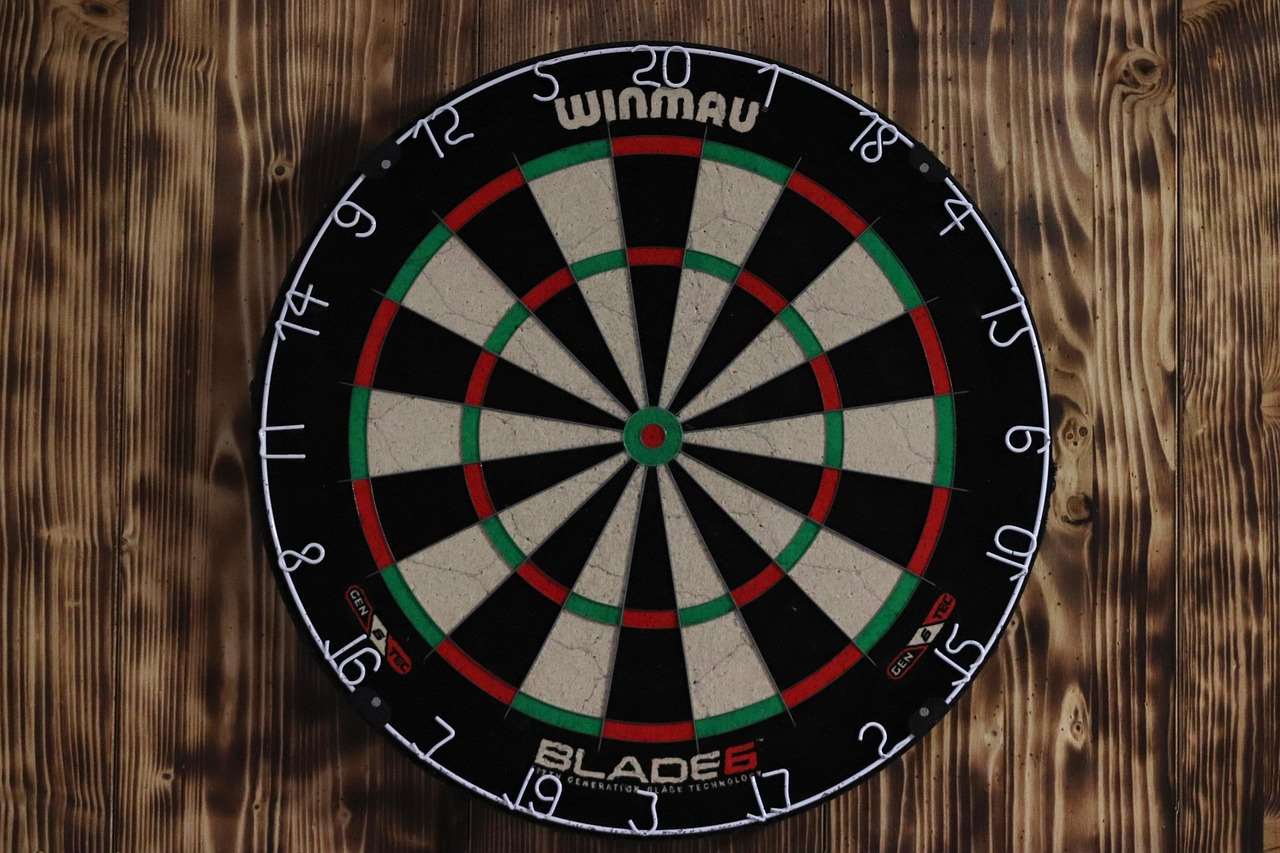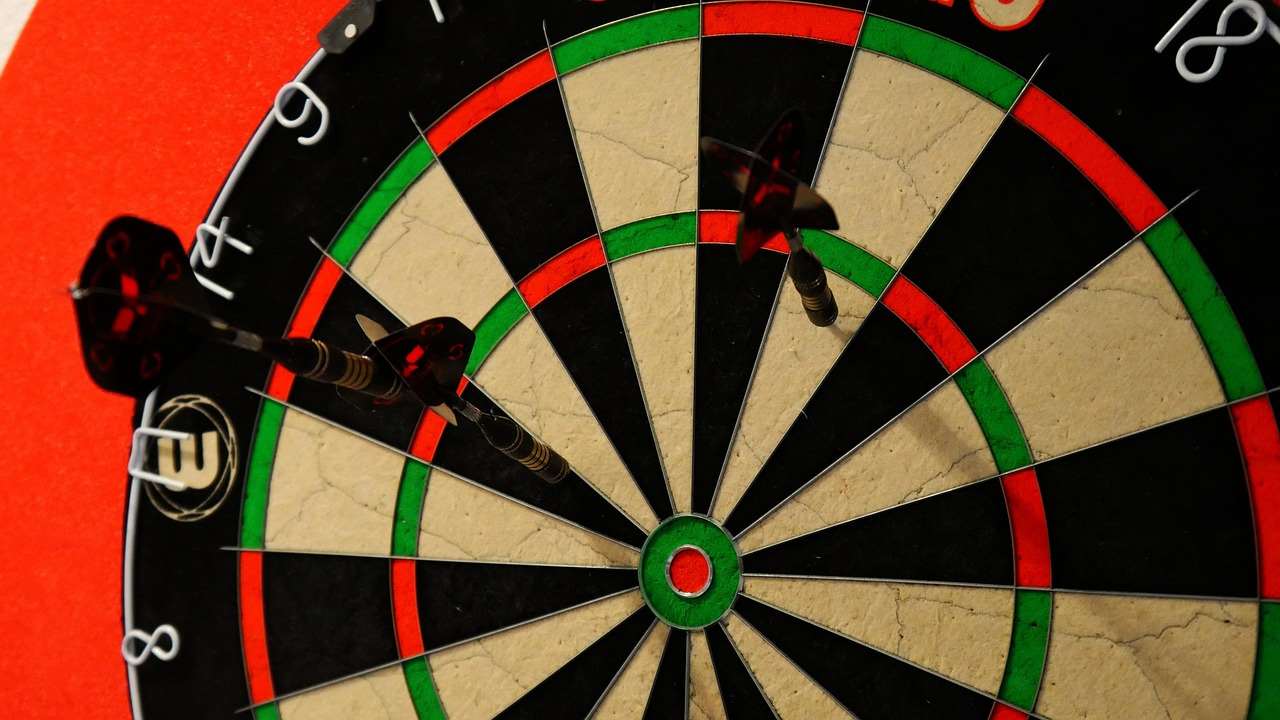Understanding the darts match format is crucial for both players and spectators. This article will explain the common formats, rules, and variations, helping you fully appreciate the excitement of the game. We’ll also cover helpful tips and strategies to improve your game.
⚠️ Still Using Pen & Paper (or a Chalkboard)?! ⚠️
Step into the future! The Dart Counter App handles all the scoring, suggests checkouts, and tracks your stats automatically. It's easier than you think!
Try the Smart Dart Counter App FREE!Ready for an upgrade? Click above!
The most basic darts match format involves players taking turns throwing three darts at a dartboard, aiming for the highest score. The game continues until one player reaches a predetermined total, often 501, starting with a double (a double 20, 18 etc, to “check out”), or achieving a better score than their opponent in a set number of legs.
However, the specifics of a darts match format can vary significantly depending on the level of play and the tournament rules. This is where understanding the nuances comes into play, to truly appreciate the strategic depth of darts.
Understanding Different Darts Match Formats
Many variations exist within the general framework of darts match format. Let’s explore some of the most popular ones.

501
This is arguably the most popular darts match format worldwide. Players start with 501 points and subtract their scores after each turn. The game is won by the first player to reach zero, but they must finish on a double. This darts match format demands a balance of accuracy and strategic shot selection, especially near the end.
301
Similar to 501, but with a lower starting score of 301 points. This darts match format is often used for quicker games or as a warm-up.
Cricket
Cricket is a different kind of darts match format, focusing on closing out specific numbers on the board (15, 16, 17, 18, 19 and 20, plus the bull). Players “close” a number by hitting it three times; once that number is closed it can’t be counted for the opponent. The game is won by closing all the numbers and then getting more points than your opponent by hitting those numbers. This darts match format emphasizes consistency and strategic targeting.
Around the Clock
In this darts match format, players must hit each number on the board from one to twenty, followed by the bullseye. This darts match format emphasizes a wide range of abilities and efficient number hitting. The player finishing it first wins.
Shanghai
This is a less common but interesting darts match format. Points are scored by hitting the numbers in a specific order (single, double, treble) for each number on the board. This darts match format tests players’ ability to systematically hit different segments of the board. It often requires a high degree of precision.
Leg, Set, and Match in Darts
The terminology used in describing a darts match format can sometimes be confusing for newcomers. Let’s clarify some key terms:
Leg
A leg is a single game played to a certain score (e.g., 501). The first player to reach zero (finishing on a double) wins the leg.
Set
A set is a group of legs. For example, a set might consist of the best of three legs, the best of five legs, or even more. The player who wins the majority of legs within a set wins the set. It’s often used in tournaments to allow for a best-of-multiple-legs match structure in a given darts match format.
Match
A match is a series of sets. The number of sets in a match can vary. The player who wins the majority of sets in the match wins the overall contest. This is the ultimate goal, making a match the final outcome of a darts match format.

Choosing the Right Darts Match Format
The optimal darts match format depends on various factors, including the skill level of the players, the time available, and the desired level of competition. Consider these points when selecting a format:
- Skill Level: Beginners might prefer shorter formats like 301, while experienced players may opt for longer, more challenging formats like 501.
- Time Constraints: If time is limited, choose a shorter format. Longer formats, like those involving multiple sets, require more time.
- Player Preference: Different players enjoy different types of challenges. Some might prefer the straightforward scoring of 501, while others might find the strategic depth of cricket more appealing.
Experimenting with different darts match formats helps you discover your preferences and improve your overall game. You might find you excel in certain formats, while others may present unique challenges that strengthen your weaknesses.
Tips for Success in Any Darts Match Format
Regardless of the specific darts match format, certain strategies consistently improve your chances of success. Here are a few:
- Practice: Consistent practice is key to improving your accuracy and consistency.
- Warm-up: Always warm up before a match to get your hand-eye coordination and focus.
- Develop a Strategy: Develop a strategic approach that suits your skills. This can involve focusing on high-scoring areas, practicing specific finishes, or using a mixture of tactics.
- Stay Calm: Maintain composure during matches. Nervousness can affect your performance. Consider using relaxation techniques, and remember the match is supposed to be enjoyed!
- Analyze Your Game: Regularly review your performance to identify areas for improvement. Analyzing each throw can help you refine your technique, spot inconsistencies, and ultimately achieve greater success.
Understanding your strengths and weaknesses within a specific darts match format is also crucial for strategic decision-making. Knowing when to take risks and when to play it safe greatly contributes to your success.

Advanced Darts Match Formats and Tournament Structures
Beyond the basic formats, there are more complex darts match formats often seen in professional tournaments. These can involve intricate scoring systems, multiple sets, and even elimination rounds.
Understanding these more complex tournament structures requires a deeper dive into the rules and regulations. However, the core principles of leg, set, and match still apply. Familiarizing yourself with the specific tournament rules beforehand is crucial for success in professional competition.
Many professional tournaments use variations and specific combinations of the basic formats above to create exciting and dynamic competitions. These can include double-elimination brackets, round-robin stages, and other systems designed to produce a clear winner through multiple stages of play.
Learning about the different darts match formats used in professional tournaments helps deepen your appreciation for the strategic intricacies and competitive intensity of the sport. It also allows you to better understand how professional players approach their games.
Resources for Learning More About Darts Match Formats
Numerous resources are available to learn more about different darts match formats and the rules governing them. Online forums, specialized websites, and even dedicated mobile applications offer valuable information and insights for players of all levels.
You can find detailed explanations of various darts match formats, tips for improving your game, and strategies for winning matches. Don’t hesitate to explore these resources to enhance your understanding and skills.
For example, consider using a Darts Scoreboard App to streamline the scoring process and keep track of your progress during matches. This can be especially beneficial when playing complex darts match formats.
Further, engaging with online communities can provide a platform to discuss strategies, share experiences, and learn from fellow dart players. These online forums and communities offer valuable insight into the different darts match formats and strategies used by other players. They often present diverse perspectives and can be a significant source of advice and support for improving your gameplay.

Conclusion
Mastering the intricacies of darts match formats is a journey that enhances your enjoyment and success in the game. Whether you’re a casual player or aspiring professional, understanding the various formats, rules, and strategies allows you to fully appreciate the depth and complexity of darts. From the simple thrill of a 301 game to the strategic challenges of cricket or the high-stakes pressure of a professional tournament, the world of darts offers a thrilling and rewarding experience for players of all levels. Remember to practice regularly, refine your technique, and adapt your strategy to different darts match formats, and you’ll steadily improve your game.
So, grab your darts, choose your preferred darts match format, and get ready to experience the excitement of the game! Explore the various resources available, practice your skills, and enjoy the rewarding experience of competitive darts. Remember to check out our resources on darts quickest finish and 9 dart combinations for further improvement.
Consider also learning about dart score rules, optimizing your barrel dart board setup, and even checking out go darts for a fun alternative. Don’t forget to check out our article on how long is the oche in darts for improved gameplay. And for those interested in a good darts game to buy, we have suggestions to help you choose the perfect one.

Hi, I’m Dieter, and I created Dartcounter (Dartcounterapp.com). My motivation wasn’t being a darts expert – quite the opposite! When I first started playing, I loved the game but found keeping accurate scores and tracking stats difficult and distracting.
I figured I couldn’t be the only one struggling with this. So, I decided to build a solution: an easy-to-use application that everyone, no matter their experience level, could use to manage scoring effortlessly.
My goal for Dartcounter was simple: let the app handle the numbers – the scoring, the averages, the stats, even checkout suggestions – so players could focus purely on their throw and enjoying the game. It began as a way to solve my own beginner’s problem, and I’m thrilled it has grown into a helpful tool for the wider darts community.